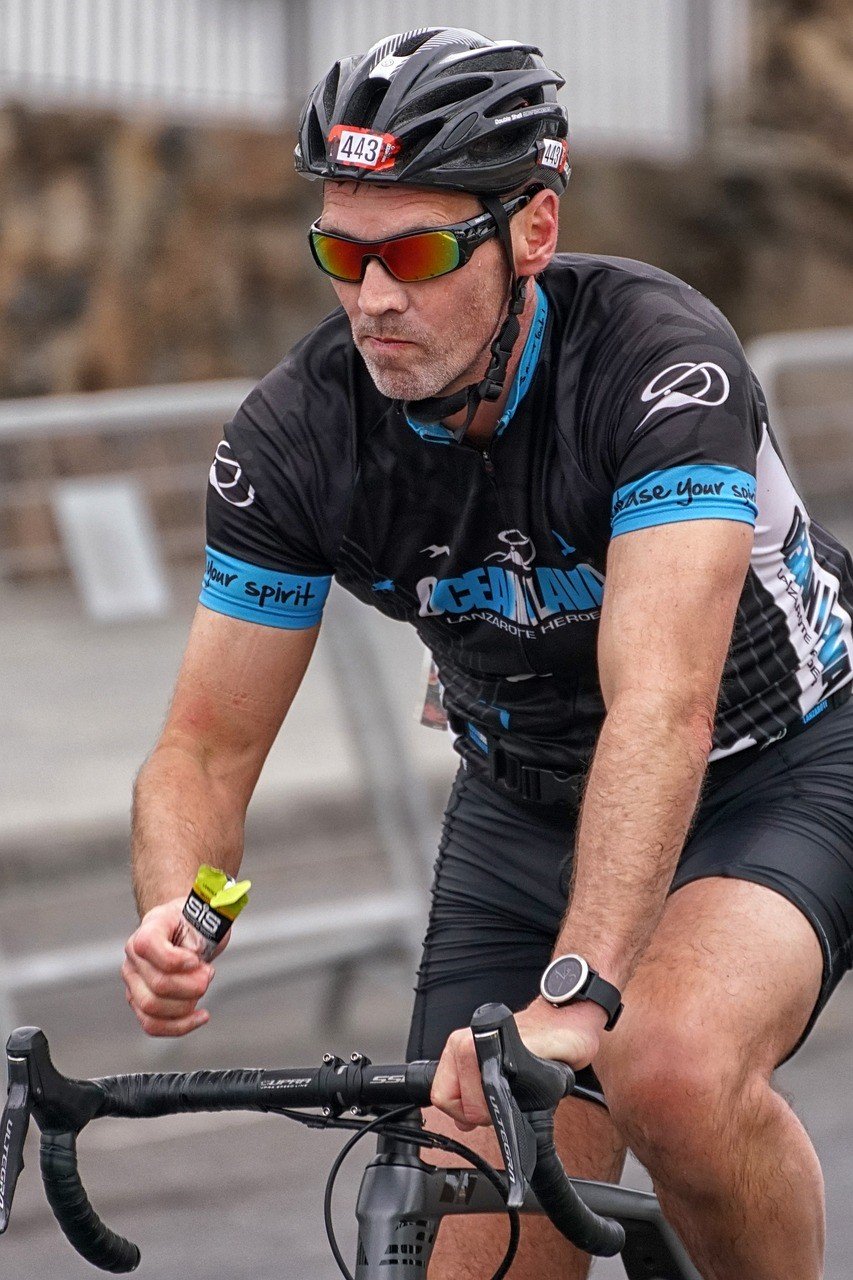As you prep for race day, one key factor that can make or break your performance is nutrition—specifically, sports gels. These little packets of energy are designed to keep you fuelled and focused during the gruelling swim, bike, and run. But not all sports gels are created equal, and what works for one athlete might wreak havoc on another’s stomach. Let’s dive into the top sports gel brands, their nutritional information, and share some crucial tips on how to choose the right one for you.

Top Sports Gel Brands and Their Nutritional Content
- GU Energy Gel – https://amzn.to/3VapIna
- Carbohydrates: 22g per gel
- Electrolytes: 55mg sodium, 40mg potassium
- Pros: GU is a favorite among endurance athletes for its variety of flavours and smooth consistency. It contains essential amino acids and electrolytes to help maintain energy levels.
- Cons: Some athletes find it too sweet, and it can be a bit thicker compared to other brands.
- Science in Sport (SIS) GO Isotonic Energy Gel – https://amzn.to/3VapIna
- Carbohydrates: 22g per gel
- Electrolytes: 10mg sodium, 10mg potassium
- Pros: These gels are designed to be consumed without water, making them convenient during races. They have a lighter texture and are less likely to cause digestive issues.
- Cons: Some athletes find the flavours too mild, and the gel can be more expensive compared to others.
- PowerBar PowerGel – https://amzn.to/4bZiuZQ
- Carbohydrates: 27g per gel
- Electrolytes: 200mg sodium, 20mg potassium
- Pros: PowerGel is packed with electrolytes and carbohydrates, ideal for longer races. It’s also available in caffeine options to boost alertness.
- Cons: The consistency is on the thicker side, which can be difficult to swallow without water.
- Maurten Energy Gel – https://amzn.to/4aLomF1
- Carbohydrates: 25g per gel
- Electrolytes: 85mg sodium, 21mg potassium
- Pros: Maurten gels use hydrogel technology to encase carbohydrates, making them gentle on the stomach and easy to digest. They have a neutral taste, which many athletes prefer during long events.
- Cons: They are relatively expensive and have fewer flavour options.
- High5 Energy Gel – https://amzn.to/4bNWnG7
- Carbohydrates: 23g per gel
- Electrolytes: 30mg sodium, 12mg potassium
- Pros: High5 gels are known for their light consistency and natural fruit flavors. They’re also vegan and free from artificial sweeteners and colors.
- Cons: The flavour can be a bit too mild for some, and the lower sodium content might not be sufficient for heavy sweaters.
How Much to Consume During a Race
For optimal performance, it’s generally recommended to consume 30-60 grams of carbohydrates per hour during a race. This amount can increase to 90 grams per hour for longer events if your body can tolerate it. Make sure to practice your nutrition strategy during training to determine what works best for you and how your body responds to different amounts.
Tips for Digestive Success
- Practice During Training: The golden rule of race nutrition is never to try anything new on race day. During your training, experiment with different brands and flavours of sports gels to see which ones your stomach tolerates best.
- Start Slow: Begin with small amounts to see how your body reacts. Gradually increase the quantity as you become more comfortable with the gel.
- Stay Hydrated: Some gels require water for proper digestion. Check the instructions and make sure to hydrate accordingly to avoid any stomach cramps or discomfort.
- Mix It Up: Consuming the same gel repeatedly can sometimes lead to taste fatigue. Rotate between a few favourite flavours or brands to keep your palate interested and your stomach settled.
- Mind the Timing: Pay attention to when you consume your gels. Taking them too close to the start of intense activity can cause digestive issues. Aim to take them at regular intervals based on your energy needs and how your body feels.
- Listen to Your Body: If a particular gel causes discomfort, don’t force it. Each athlete’s digestive system is different, and it’s crucial to find what works best for you.
Conclusion
Choosing the right sport gel can be a game-changer for your triathlon performance. By testing different brands and flavours during your training, you’ll find the perfect fuel that powers you through each leg of the race without upsetting your stomach. Remember, what works for your training buddy might not work for you, so personalize your nutrition strategy to suit your unique needs.
Got a favourite sport gel or a tip for managing race day nutrition? Share your thoughts in the comments below! Let’s fuel our bodies right and cross that finish line strong and happy. 🚴♀️🏃♂️🏊♂️
Stay tuned for more triathlon tips and tricks. Happy training!
